Matador Network's Blog, page 745
November 18, 2020
8 thoughtful gifts to buy someone who loves road trips

A long, winding road trip is one of the best ways to see the United States. There are country-circling wine loops and overlooked roadways with attractions all too ready for a quick photo op. The diversity of the country — in food, landscapes, cultures, interests, etc. — is best soaked in from its highways, freeways, byways, and side roads. But to make the most of a road trip, one has to come prepared.
If you’re looking for the perfect gift for a friend or family member who loves road trips, get them something they don’t already have. These are the best eight road trip gifts to buy that special someone.
1. For adventurous road trippers: portable car battery jumper
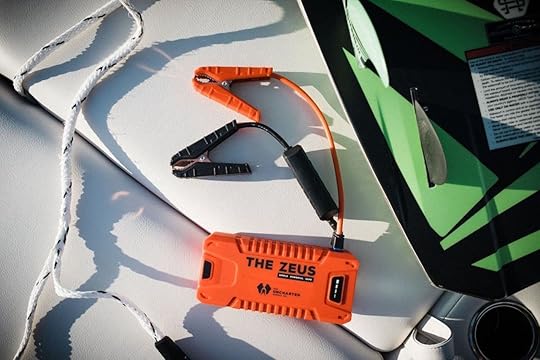
Photo: Uncharted Supply Company/Facebook
There’s a familiar script for anyone who has had their car battery die on them: First, there’s the annoyance that you left the radio or cabin light on. Then, there’s the waiting and hoping someone will pass by who can jumpstart your car. The Zeus Battery System from Uncharted can’t help that first problem, but it can make sure you aren’t stuck wasting your time until someone in another car stops to help.
The Zeus Battery System can jumpstart cars, trucks, and boats multiple times with a single charge. It also has a flashlight and USB ports to charge the rest of your electronics. In short, it’s the perfect portable battery for anyone who likes to venture to places that are low on population density, but high on adventure.
Cost and where to buy: $150, available online at Uncharted.
2. For spontaneous, multi-day road trippers: carry with you grill
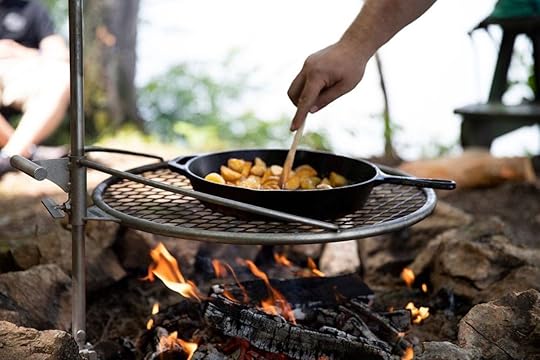
Photo: Breeo /Facebook
Road trips may be defined by cruising on the open road, but some of the best memories come from when you stop for the night. Those stops often include bare-bones campsites or permit-free camping grounds that lack any type of cooking setup. The Outpost grill from Breeo allows you to grill up your meal of choice anywhere you can build a fire.
The grate has a pole that easily sinks into the ground, and the grate makes it easy to keep your food at just the right level depending on the temperature you need. Best of all, it all packs up into a thin bag that can slide under the seat, so it’s there when you need it and not taking up too much space when you don’t. The basic set has a 19-inch diameter, and there’s also an option for a 24-inch grate. An additional kettle hook is available as well for people who can’t go without their soups and stews.
Cost and where to buy: $119-189, available online at Breeo.
3. For road trippers who like things clean: solar water heater
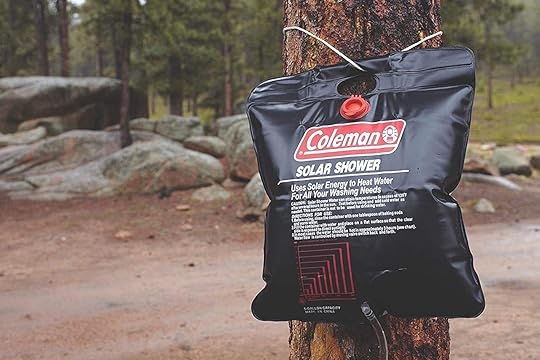
Photo: Amazon
Having hot water on hand can be a game changer whether you want to take an on-the-go shower or properly clean clothes or dishes. A solar water heater makes hot water easy — no fire, no pots, just some water and waiting.
The Coleman Solar Shower holds five gallons and has a moveable shower head. All it takes is the sun to heat the water up, and it’ll work even on chilly days. Once the water is hot, all you have to do is elevate the bag, grab the handle and spout, and let gravity send the warm water out. When you don’t need it, the Solar Shower easily stores away in a backseat pocket.
Cost and where to buy: $23, available on Amazon.
4. For the road tripper who travels with human’s best friend: dog car hammock

Photo: iBuddy/Facebook
Anyone who road trips with a pet knows that hair is unavoidable. Depending on your pet, there might be some drool stains and hyperactive jumping between the seats involved as well. The iBuddy dog hammock hooks to the headrests of your seat to keep your pet in the back and all the dirt, hair, and saliva off of your seats. You can choose to hook up just the back seats like a seat cover or bring the front half up to clip onto the front seat headrests to make a full hammock.
There are fancier versions out there, but iBuddy is affordable, hardy, and washable — something anyone who has seen their dog shake off lake water can appreciate.
Cost and where to buy: $39, available on Amazon.
5. For the coffee-loving road tripper: portable no-mess French press
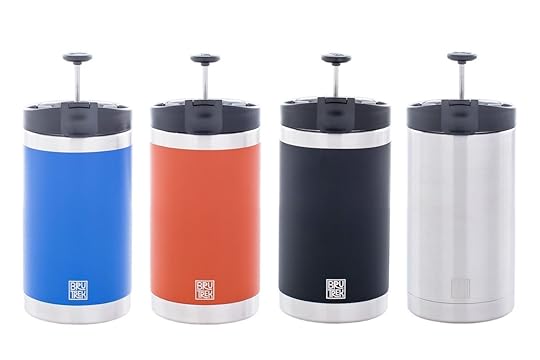
Photo: Planetary Design
Gas station coffee can only get someone so far, and specialty coffee shops can eat into the road trip budget. So why not make your own? BruTrek’s OVRLNDR French press holds 28 fluid ounces and is designed for minimum spills. Plus, the bottom comes out to make it easy to clean out the base.
The actual preparation of the coffee is easy enough to do on a quick pit stop. After removing the top, coffee grounds go in, and then the hot water. After a five minute steep, put the lid on and press and you have your coffee. And there’s no having to chug through the coffee once it’s ready — a design the company calls the Bru-Stop keeps the water from over extracting the grounds.
Cost and where to buy: $50, available online at BruTrek.
6. For the nature-loving road tripper: America the Beautiful National Parks Pass
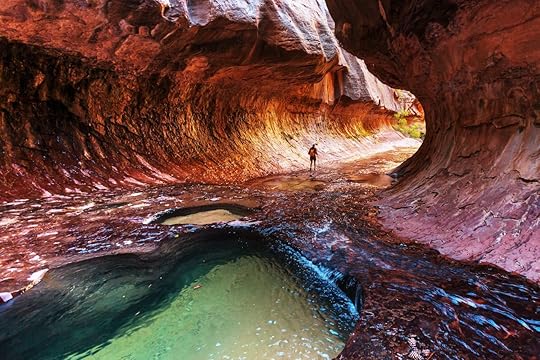
Photo: Galyna Andrushko/Shutterstock
The US’ national parks are some of the best attractions from coast to coast. There’s a national park for just about every type of traveler out there, and if you want to see as many as possible in one go, there’s an optimized road trip itinerary for that.
The America the Beautiful National Parks and Federal Recreational Lands Pass gives free entry and day use fees for the holder and three other adults at more than 2,000 sites. It’s the perfect gift for the road tripper who enjoys plenty of scenic stops.
Cost and where to buy: $80, available online at US Park Pass.
7. For the snack-loving road tripper: iceless cooler
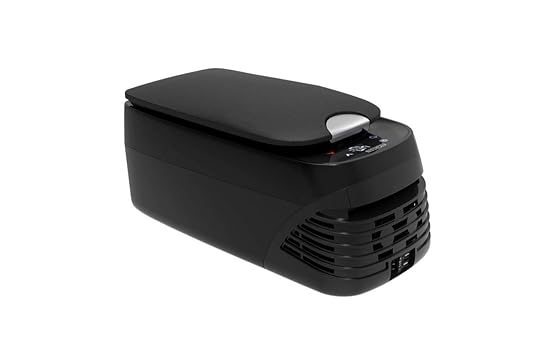
Photo: Amazon
The proper cooler can make or break a trip. It has to hold enough food to make it worth the space, while also holding enough ice to keep everything cool enough to last. Enter the Cigreen mini fridge.
The Cigreen doesn’t take ice, which means more room for food and no ice refills. Instead, it plugs into the cigarette lighter and handles all the cooling, freezing, and even heating that you need. The lowest temperature hits below 0 degrees Fahrenheit, while the highest goes up to 131 degrees. The cooler is small enough to sit in the middle console, meaning you can take full advantage of the USB charging port, touch screen controls, and cup holder.
Cost and where to buy: $290, available on Amazon.
8. For the photo-taking road tripper: instant camera

Photo: Instax Mini 90/Facebook
You can buy as many souvenirs as you like, but nothing hits home after a trip like the photos. There’s no shortage of camera options for the traveler who wants more than just shots from their phone. GoPro is a great choice for people who like to take their gear to the extreme, while others prefer a small or mirrorless camera like a Sony Alpha a6300 or Panasonic Lumix. For something fun and simple, however, an instant camera can do what all of the above can’t: provide physical photos.
Fujifilm Instax Mini 90 is an affordable option that’s compact and easy to use. Will you take the most breathtaking landscape shots with it? No, but you will capture the little in between moments. The camera makes it easy with a simple on-camera flash, adjustable shutter speed and shooting modes, and a 60 millimeter lens. There’s an argument to be made that the time for instant cameras has come and gone (twice now), but it’s a fun gift that captures the small times in between destinations that make road trips great.
Cost and where to buy: $120 to $160, at various retailers. 
More like thisRoad TripsA road trip from St. Louis showcases the Midwest’s underrated cultural attractions
The post 8 thoughtful gifts to buy someone who loves road trips appeared first on Matador Network.

Spirit Airlines bans TikTok user

Everyone appreciates a good travel hack, but sometimes those hacks cross a line that pushes the legal boundary. A TikTok user was recently banned from Spirit Airlines for posting a video showing passengers how to bring a large carry-on bag without paying for it.
The user, named robkallday, shared a video with his more than 2,500 followers showing how he used editing software to change a Spirit Airlines boarding pass to read “1” instead of “0” under the “carry-on bag” section. Since Spirit charges extra for large carry-ons that need to be stored overhead, this would have allowed people to sneak large bags onboard for free.
@robkalldayDidn’t actually do this, my bag fits #nobodyneedstoknow #travelhacks #pdfeditor #vegasbaby #iphone11pro #spiritairlines
In the video description, the user explained how he hadn’t actually used the hack himself and was just sharing a tip for those daring enough to give it a try. This didn’t matter to Spirit, however, which banned him from the airline for at least two years.
In a second video, he shared the letter he received from Spirit informing him of their decision.
“As you know, you created a video on the social media platform TikTok showing users how to manipulate a Spirit Airlines boarding pass and fraudulently indicate they paid for a carry-on bag to the financial detriment of Spirit Airlines,” reads the letter. “Additionally, as evidenced in the video’s comments, you have also been advising users specifically on what cell phone application they should download to carry out the scam. In light of this egregious misconduct, Spirit Airlines has determined that you are no longer permitted to fly with us and we have placed you on a list for this purpose. You are also barred from entering Spirit’s facilities. If you seek to circumvent this, any ticket that you purchase will be forfeited without a refund. If you come into our facilities we will report that trespass to the appropriate law enforcement authorities.”
Spirit suggested that the ban could be lifted after two years but only if the offender wrote a letter pleading his case. Since the video has gone viral, however, the damage may have already been done. 
More like thisAirports + Flying25 genius hacks that will make your plane ride less terrible
The post TikTok user banned from Spirit Airlines for posting a travel hack video appeared first on Matador Network.

EVA Air launches speed dating flight

Flights to nowhere are rising in popularity during the COVID-19 pandemic as travel restrictions prohibit most border crossings these days. In Taiwan, EVA Air is partnering with travel experience company Mobius for the “Fly! Love is in the Air” campaign. The campaign features flights to nowhere, designed for singles, on Christmas Day, New Year’s Eve, and New Year’s Day.
Chiang Tsung-Wei of Mobius told CNN, “Because of Covid-19, EVA Air has been organizing “faux travel” experiences to fulfill people’s desire for travel. When single men and women travel, apart from enjoying the fun in travel, they may wish to meet someone — like a scene in a romantic movie.”
The experience includes a three-hour flight from Taipei’s Taoyuan International Airport that circles around Taiwan, plus an extra two hours of date-time back on land. Passengers will be able to sample meals cooked by Michelin-starred chef Motoke Nakamura, and mingle in speed-dating fashion while aboard (keeping their masks on, of course).
The Christmas flight will be followed by afternoon tea on the ground, the New Year’s Eve flight begins with candlelit dinner before boarding, and the New Year’s Day flight will include a breakfast date.
According to Chiang, “The biggest advantage of speed dating on a flight comes from the serious nature from our participants. In addition to gathering participants with enough spending power, it also attracts a group of single people who love traveling. With the same values, it boosts participants’ motivation to meet and helps smoothen their conversation from the start.”
Each flight will have 20 men and 20 women, who are required to be university graduates with Taiwanese citizenship. Men must be between 28 and 38 years old, while women must be between 24 and 35. The cost is $295 per person.
The flight certainly follows the classic Christmas rom-com trope of meeting your soulmate on a plane, though this is a more manufactured, less environmentally-friendly version. Flights to nowhere are a creative way for airlines to stay in business during the pandemic, but they also create unnecessary CO2 emissions. 
More like thisTITLE OF PIECE
The post Taiwanese airline EVA Air is launches speed-dating ‘flight to nowhere’ appeared first on Matador Network.

Best frozen waterfalls and lakes US
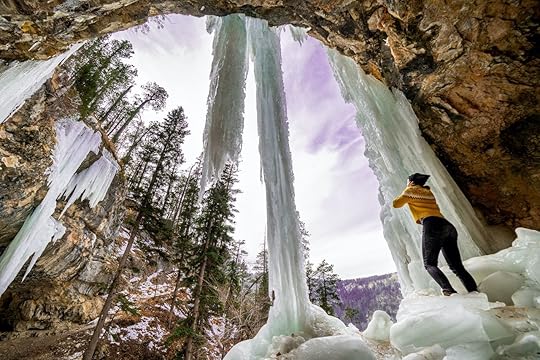
The gleam of sunlight reflecting off the ice. The wonder of a frozen waterfall standing still like a moment arrested in time. The dissonance of a steaming hot spring surrounded by frozen ground. There’s something about icy landscapes that is both intimidating and irresistibly beautiful. Add to the scenery the silence of winter and the briskness of the air, and a visit to a magical frozen waterscape is one you’ll long cherish. These are our favorite frozen landscapes to savor the quiet and put your camera to work.
1. Apostle Islands National Lakeshore, Wisconsin
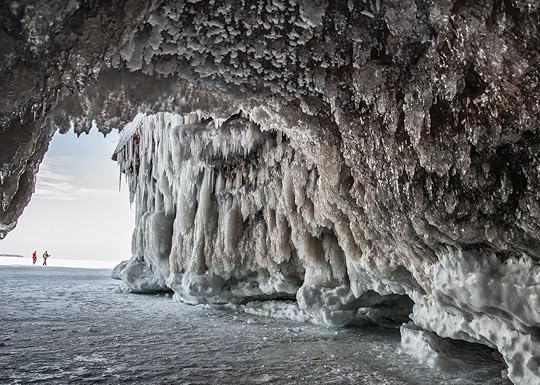
Photo: critterbiz/Shutterstock
Twenty-two sandstone islands carved out of Lake Superior, the Apostle Islands of Wisconsin are ultra-scenic in the warmer months, blues and greens reminiscent of the Caribbean. But come winter, the boreal-forested sea cliffs freeze, and the lapping waters eventually form ice caves at their edges. You’ll need a solid string of cold-enough weather to access the caves and plenty of warm clothing, since you’ll walk over a mile on Lake Superior to get there. The caves usually form from Saxine Creek to Lunch Beach, and the park announces when they’re safe and open — so keep an eye out.
2. Niagara Falls, New York

Photo: Photomanz/Shutterstock
Thirty million people descend upon Niagara Falls each year, but in winter, the crowds disperse. Draining Lake Erie into Lake Ontario, the falls — technically a set of three — are one of the most powerful on the continent, with six million cubic feet of water cresting the cascade every minute. They rarely truly freeze, but they can look like it. While it’s likely that the Maid of the Mist won’t be sailing, two observation decks are open in winter, and free snowshoes are available from the Cave of the Winds Pavilion, providing visitors a unique, fun way to explore the surrounding state park.
3. Spearfish Canyon, South Dakota

Photo: Byron Banasiak/Shutterstock
In the Badlands of South Dakota, Spearfish Canyon’s 1,000-foot walls tower over one of the country’s most scenic drives. The 19-mile Spearfish Canyon Scenic Byway (Hwy 14A) winds along these epic limestone palisades, by several splashy waterfalls, and connects multiple side canyons great for hiking and biking in the warmer months. In winter, even sparse waterfalls freeze into gorgeous icy displays, and the dense forest lights up in a scene out of a Christmas card. Definitely consider snowshoeing to Roughlock Falls, and Little Spearfish Falls is worth grabbing your camera for, too.
4. Grand Prismatic Spring, Yellowstone
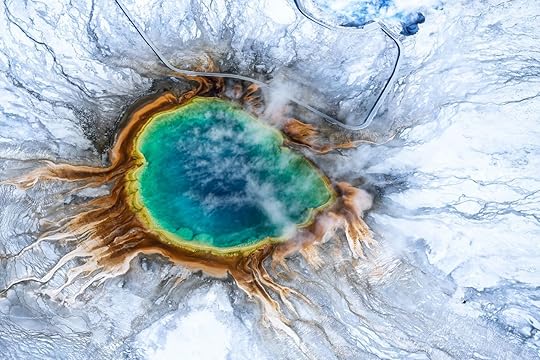
Photo: TRphotos/Shutterstock
Yellowstone’s winter crowds usually number around two percent of their summer size. For those who have been in the high season, seeing the park in winter without hordes of tourists verges on the hard-to-believe. With its ultra-intense colors and extreme heat juxtaposed against cold, cold snow, Grand Prismatic Spring seems even more alien in this landscape, a rainbow giant lost in a sea of white. In winter, you’ll need a snowmobile or snowcoach tour to access Midway Basin and see this spectacle — and it’s totally worth it.
5. Multnomah Falls, Oregon
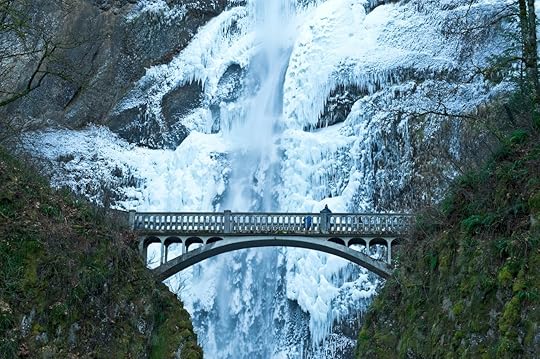
Photo: Robert Crum/Shutterstock
Multnomah Falls cascades down a total of 620 feet into the Columbia River Gorge National Scenic Area. The Fern-Gully-meets-Ice-Age splendor of viewing the frozen falls from the pedestrian bridge is unique to Multnomah because of, well, the bridge. It’s situated above the lower fall and about eye-level with the base of the upper fall, allowing you to gaze up 542 feet to the top while simultaneously observing what a waterfall looks like just as it passes over the ledge and suspends itself in time. Good luck avoiding whiplash at this one.
6. Crater Lake National Park, Oregon
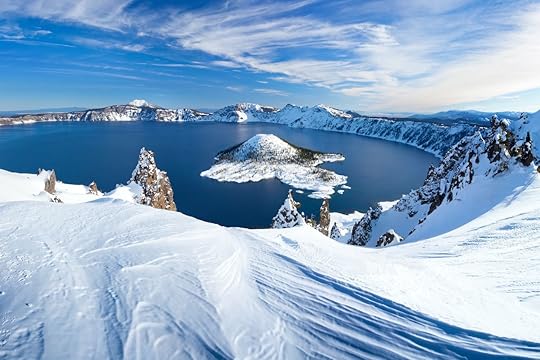
Photo: Matthew Connolly/Shutterstock
In winter (roughly November to May, though sometimes earlier), Crater Lake National Park’s Rim Drive is closed, as is Crater Lake Lodge. Crater Lake, however, is wide open for snowshoers, skiers, hikers, backcountry campers, and anyone looking for a little peace and quiet — for free. Forty-four feet of snow fall on the park roughly every year, and the west and south entrances remain open for access and parking. Cross-country ski the rim, attend a ranger-led snowshoe walk, or try sledding the open meadow south of Crater Lake Lodge.
7. Minnehaha Falls, Minnesota
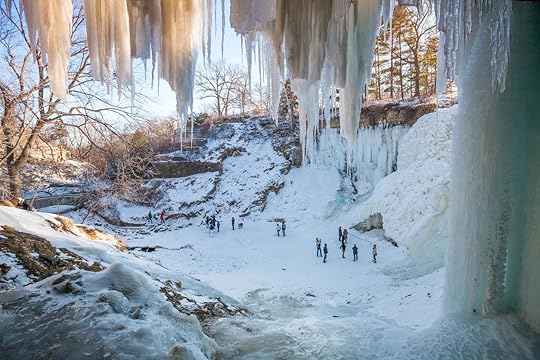
Photo: Anh Luu/Shutterstock
The 53-foot Minnehaha Falls is right in the city of Minneapolis, the center point of Minnehaha Regional Park. A 2.1-mile walk gets you to the falls, which regularly freeze in winter, forming a sheet of glacier-blue ice you can walk under and through, like a grotto. The park, which is arguably the best in the city, is free of charge, and also has some beautiful river overlooks and limestone bluffs worth your walk in the snow.
8. Ouray Ice Park, Colorado
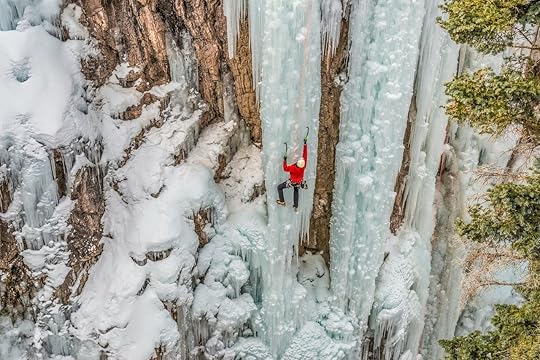
Photo: Danita Delimont/Shutterstock
Man-made waterfalls are seldom worth going out of your way to view. Ouray Ice Park is the exception. This towering vertical wall of ice suspends itself over its gorge like a cloak, beckoning ice climbers from around the world to the “Switzerland of America” each winter. Even if you don’t don a pair of ice picks and ascend the wall of ice yourself, merely viewing its grandeur — the climbers themselves look about the size of ants as they make their way up — is a reminder of how tantalizingly beautiful ice can be.
9. Great Falls Park, Maryland and Virginia
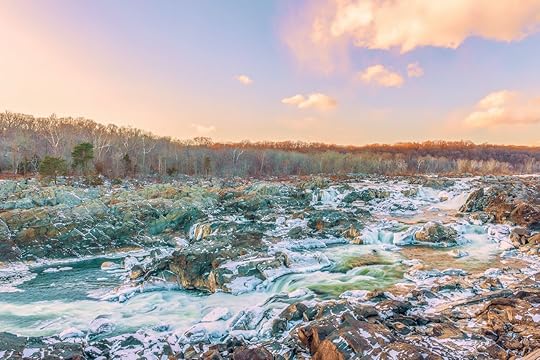
Photo: VIKVAD/Shutterstock
Right on the border of Maryland and Virginia, Great Falls Park, a particularly scenic and rocky stretch of the Potomac, winds for 800 acres just 15 miles away from the Washington Mall. Above the falls, the river is nearly 1,000-feet wide; below the falls, a mere 60 feet. The park is a hotspot for hiking, rock climbing, snowshoeing, scenic-overlook scouting, and general getaway-ing. 
More like thisArt + ArchitectureThe 7 most stunning snow-covered mountain towns in Europe
The post The most beautiful frozen waterscapes in the US to witness this winter appeared first on Matador Network.

Boeing 737 Max planes approved fly

After 20 months of being grounded due to serious safety issues, Boeing’s 737 Max has received the all-clear from the Federal Aviation Administration (FAA) to carry passengers again.
The aircraft was grounded in March 2019 after two crashes that killed 346 people due to a malfunctioning safety feature. Since fixing the issue, Boeing has undergone an extensive (and expensive) approval process to get the plane in the air again.
The FAA order only covers United States domestic flights operated by American, United, and Southwest airlines, i.e. 72 aircrafts. Aircraft to or within other countries — 315 planes in total — require the approval of those nations’ aviation authorities, and could still take longer. Even in the US, individual planes must still be inspected by the FAA before being allowed to fly, and pilots are required to undergo additional training.
Right now, only American Airlines has reintroduced the 737 Max to its flight schedule, using it for several flights between Miami and New York in late December and January. Southwest isn’t expected to fly the 737 Max until spring, while United may start using it in the first quarter of 2021. 
More like thisAirports + FlyingThe 7 coolest airplane liveries in the world and the stories behind them
The post Boeing 737 Max finally gets approval to fly again appeared first on Matador Network.

Mardi Gras parades canceled in NOLA
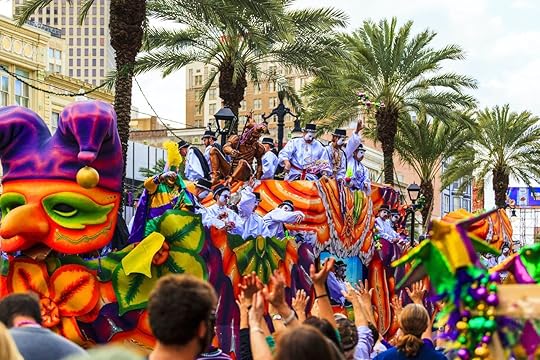
New Orleans’ Mardi Gras, one of the biggest annual parties in the United States, will be canceled in 2021, Mayor LaToya Cantrell announced on Tuesday.
People are still encouraged to find safe, creative ways to celebrate, but the iconic parades that define the traditional event will be prohibited.
In a statement, the mayor’s office said Mardi Gras is “a season of traditions that we celebrate every year, a time that the community comes together in formal, fun, and often unexpected ways. With COVID-19 cases increasing around the country, we will have to modify how to observe [Carnival] season. … We are surrounded by hot spots and we don’t know what the future holds in store for us.”
In place of parades, the mayor’s office is asking people to submit detailed plans for socially distanced celebrations. The designs must comply with all COVD-19 protocols, be flexible in scale, and avoid involving crowds of strangers.
Submissions are due by December 5, at which time they will be reviewed by the New Orleans public safety and public health team. More information about submitting an idea can be found online. 
More like thisRestaurants + Bars14 Bourbon Street bars you must visit when in New Orleans
The post New Orleans cancels Mardi Gras parades in 2021 appeared first on Matador Network.

November 17, 2020
Squirt boating and how to try it
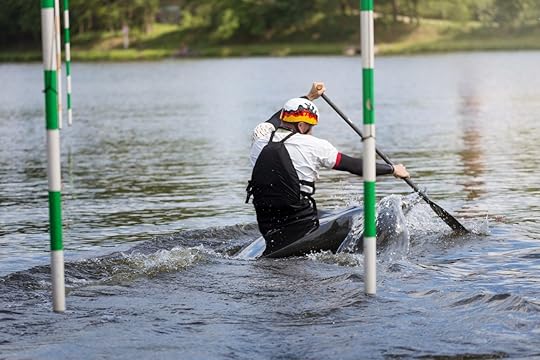
Squirt boating takes all the extras in kayaking and rips them away. All you are left with is thin, tight-fitting watercraft that floats — but just barely. That’s intentional. Squirt boating is kayaking in its minimalist form, playing with the most basic physics of buoyancy. The result is a craft that lets paddlers perform tricks much more easily than on a traditional kayak.
For the past several years, some of the sport’s most dedicated have taken this concept to new levels. The name “squirt” is said to come from the idea of how the boat shoots forward like it’s being squeezed through the water. Squirt boats barely stay afloat even in calm river conditions, but they’re agile enough that the paddler can easily turn right or left with the flick of their stick.
If you spend much time hanging by a whitewater zone, you may have already seen squirt boating in action. Remember that paddler that you thought was totally out of control, hull submerged and stern sticking straight up in the air? That’s not out of control. That’s some skillful squirt boating, right there. Here’s more on this weird but awesome sub-genre of kayaking.
How is squirt boating different from normal kayaking?
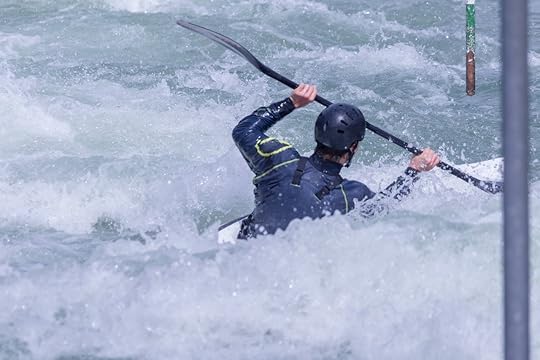
Photo: Werner Rebel/Shutterstock
Squirt boats aren’t the most practical craft for navigating long-distance paddles. Instead, they are used primarily to perform freestyle tricks in specific water conditions like flatwater or in eddy lines. Becoming perpendicular to the water is far easier in a squirt boat than in a normal kayak as the boat itself barely floats — add the paddler into the equation, and it’s something akin to a bucking bronco on the water, flapping and floundering but still somehow in total control. Perpendicular or near-perpendicular stances are the basis for many freestyle moves in the sport, and squirt boating developed a niche following among freestyle kayakers since it first appeared in the 1980s.
The kayaking term “mystery move” is most easily demonstrated on a squirt boat. In this trick, the kayaker — or squirt boater, in this case — completely submerges themselves below water using a combination of paddle technique and the boat’s easy maneuverability. Some paddlers prefer circular hand paddles to the traditional kayak paddle, allowing for more movement underwater.
Squirt boats are built differently than traditional kayaks and covered canoes. They’re typically made of fiberglass, carbon, and kevlar. The bow remains dense and allows for leg placement to be secured in the craft like a kayak but with more knee movement, while the stern is quick and turns on a dime. If you were to be blindfolded and sent out squirt boating on flat water, it would feel very much like you’d been strapped to a small surfboard.
Diehard paddlers looking to engage in squirt boating are likely to have a boat custom-built to their body size and style. Most squirt boats are between eight and 10 feet long, though they sometimes reach 11 feet. A shorter boat makes it easier to flip, twist, and submerge but will also be more difficult to maintain your balance on. It’s best to start on a longer boat and progress to a shorter boat as you improve. Before purchasing a squirt boat, sample a few different sizes and builds to find what you feel the most comfortable with.
If buying a used boat, ask the seller about their physical build (or that of the person who rode the craft). Are they similar in size to you? If not, keep searching.
Where can I try squirt boating?
View this post on InstagramA post shared by Claire O'hara (@ohara_claire)
Step one is finding a squirt boat. Murky Water Kayaks out of Ontario, Canada, makes a few varieties and has emerged as the leader in squirt boat design. The Hellbender and Bigfoot are among the popular models. Squirt boats aren’t cheap. A used one will run you between $500 and $1,000 on gear swap sites or Craigslist (if available). If you opt for a new model that’s customized to you, specifically, be ready to spend upwards of $1,300 or more.
To find what’s right for you, consider the following:
Inseam –The distance between the end of your feet and the knees, with a little wiggle room.
Lay up — This is the general design of your squirt boat and what it is made of. Murky Water Kayaks classifies its lay ups as standard or beefy, with the beefy option giving more reinforcement and thickness on the inside and outside seams. When you hear carbon and kevlar deck with a glass hull, for example, that’s referring to the lay up of the squirt boat.
Length — As noted above, you want to be able to easily maneuver the board. Before ordering a board, consult with a river outfitter or guide who can take your level of on-water experience into consideration and make a recommendation.
Once in possession of a boat and paddle, the next requirement is a stretch of water. Unless you’re an expert kayaker, start out on flat water and progress to heavier current or eddy lines as you feel more comfortable. Stop into a local river outfitter to inquire about conditions and popular spots in the area, especially if you aren’t familiar with a certain area. The website Sink Spots helps paddlers find good stretches of water near them based on type and conditions. 
More like thisCruises7 glass-bottom boat tours that are like scuba diving, cocktail in hand
The post Squirt boating is a weird new take on kayaking, and the tricks are insane appeared first on Matador Network.

Frontline worker RV trip giveaway
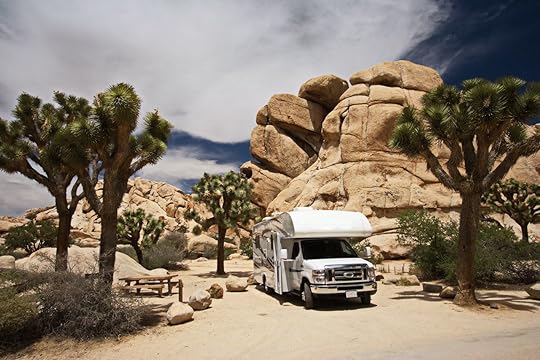
2020 has been the year of the RV, since air travel and international vacations have largely fallen by the wayside. That’s why this seven-day RV vacation giveaway is a perfect fit for the times. To celebrate medical workers on the front lines of the pandemic, El Monte RV is giving away a weeklong RV trip to one healthcare hero.
Gordon Hewston, Chief Operating Officer of Tourism Holdings Limited, parent company of El Monte RV, said in a statement, “It’s important we continue to find ways to extend our gratitude and give back to the heroic people in healthcare in the midst of COVID-19, especially as the holiday season nears. El Monte RV would like to pay tribute in the best way we know how: with a seven-day RV road trip to the most breathtaking outdoor sites the US has to offer.”
The company is asking for nominations of doctors, nurses, technicians, medical researchers, pharmacists, or any other medical worker currently licensed in the US for the giveaway. The winner will receive an RV motorhome for seven days and an allowance of 100 gas miles per day.
Nominations are open from now to 2:59 PM ET on December 13, 2020. The public will then be able to vote on the entries, and whoever gets the most votes will be crowned the winner on December 16. To nominate someone, you must submit a written story about your healthcare hero as well as a photo or video. 
More like thisRoad TripsThe coolest camper van conversions to inspire you to hit the road
The post Healthcare workers on the frontlines can win a free seven-day RV vacation appeared first on Matador Network.

ost popular Korean barbecue meats
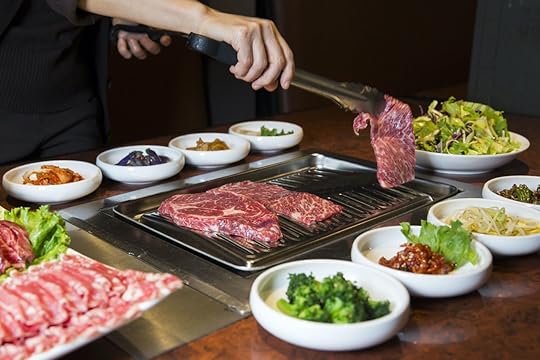
Much fanfare accompanies sitting down for dinner at a Korean barbecue restaurant. There’s the party-like atmosphere at many of these establishments, the oversized beers, the cacophonous conversation from other tables, and the satisfying sizzle emanating from the grill. And then there’s the food itself. The smell of charcoal and smoke and the crunch of meat from nearby tables is sure to get your stomach rumbling, but for first-timers, the menu might take a moment to navigate. Not only are there the banchan (side dishes) and drinks, but you’ll have to sift through an encyclopedia of meat cuts before deciding what you want.
There are the more familiar items, like bulgogi (thin slices of beef or pork) and galbi (beef short ribs), but you’ll also likely encounter some cuts that are lesser known to American diners, like beef tongue and pork jowl. To get a headstart, we’ve compiled a near-complete list of meat cuts you might come across on the menu. Though you might find duck and seafood options at some restaurants, we’ll just be covering the most common meat cuts at a Korean barbecue restaurant: beef, pork, and chicken, each of which is cooked on the grill at the table.
A few terms to remember: gui refers to grilled dishes in the world of Korean barbecue, so you might see the term galbi-gui (grilled short ribs) on the menu. Marinades are all important in Korean barbecue, and special designation is given to marinated and unmarinated dishes. Look for saeng on the menu, which means raw in Korean, but in this context simply translates to unmarinated. On the other hand, the term yangnyeom refers to a meat that is marinated. So if you see saeng-galbi, that’s the non-marinated version of short ribs, while yangnyeom-galbi is the name for the marinated version.
Keeping all that in mind, here are the most popular cuts of meat to try at a Korean barbecue restaurant.
Marinated beef

Photo: BONGJUNE KIM/Shutterstock
Short steak (jumulleok): Typically paired with ssamjang (fermented soy bean and red pepper paste), this exceptionally tender cut of short cut steak is marinated with sesame oil, soy sauce, minced garlic and onion, and pepper before it’s grilled.
Beef short ribs (galbi or kalbi): Probably one of the most well known and beloved cuts of meat in the pantheon of Korean barbecue, galbi, sometimes also spelled kalbi, are thick beef short ribs. Traditionally cooked over wood charcoal, galbi uses a ganjang-based (Korean soy sauce) marinade. Galbi is sometimes served in ssam (lettuce wraps), and is topped with chili paste. One prominent version of galbi served in the United States is called LA galbi, which is cut across the bone, resulting in thinner, longer strips of meat.
Sirloin, ribeye, or brisket beef strips (bulgogi): This grilled beef dish consists of marinated thin slices of beef sirloin, ribeye, or brisket (dak and dwaeji bulgogi are the chicken and pork versions, respectively). The classic bulgogi — which translates to fire meat — marinade consists of soy sauce, rice wine, sugar, sesame oil, and garlic. Another popular way to prepare bulgogi is to stir fry the meat. The finished dish is typically served on a bed of rice or noodles, adorned with mushrooms and scallions.
Thin cut rib meat (kalbisal): Also known as galbisal, the name for this cut means “rib meat.” The meat has been cut off bone, and chopped into small, bite-size pieces.
Finger short ribs (nook gan sal): So named because the size and shape of these strips of beef resemble fingers, nook gan sal are a less common style of short rib.
Unmarinated beef

Photo: usefuldesign/Shutterstock
Chimasal (flank steak): Flank steak is cut from the abdominal muscles of the cow. It’s one of the most lean cuts of beef, with very little fat marbling, and cooks quickly.
Thin sliced brisket (chadolbaegi): Because these paper thin slices of brisket are not marinated before being grilled, they’re immediately dipped in a sesame oil, salt, and pepper sauce after being cooked. The process is quick — it sometimes takes as little as ten seconds — and results in a melt-in-your-mouth texture.
Sirloin steak (deungsim): This choice cut of tender, juicy steak has beautiful marbling. High quality marbled sirloin is called kkotdeungsim. The “kkot” designation means flower, a reference to the steak’s intricate marbling.
Thin sliced beef belly (usamgyeop): These fatty slices of beef belly are similar in appearance to bacon. Like chadolbaegi, the thin slices take just moments to cook.
Beef tenderloin (andeungsi): This lean cut of tenderloin beef is well marbled, which helps it stay juicy and flavorful while cooking.
Beef tongue (hyuh mit gui): Beef tongue doesn’t come to the table whole. Instead it’s presented as thin-cut rounds with sporadic marbling, sometimes laying flat or rolled into tubes.
Pork
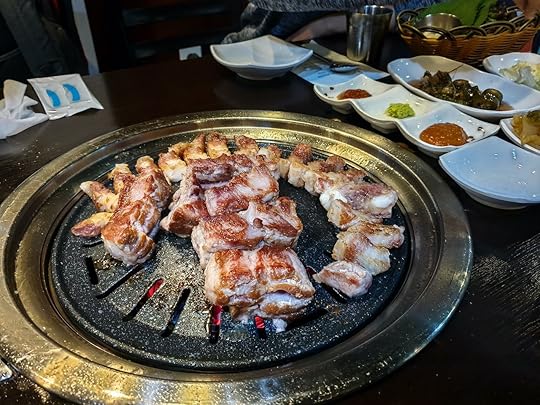
Photo: Luke W. Choi/Shutterstock
Pork belly (samgyeopsal): Among the most popular Korean barbecue pork cuts, some urban legends say that Korean miners popularized fatty pork belly. After the pork belly is grilled, the slices are dipped in red pepper paste, soybean paste, or sesame oil or served in a lettuce wrap. The name samgyeopsal means “three layered meat,” a reference to alternating layers of fat and meat.
Pork chop (moksal): Though “mok” means neck in Korean, these pork chops are actually derived from the pig’s shoulder. Moksal isn’t served whole, but rather cut into smaller pieces during the grilling process.
Pork skirt-meat (galmaegisal): This leaner cut of pork is often favorably compared to beef because of its dark color and meaty flavor. Galmaegisal is a homonym for seagull in Korean, but there are no birds involved. At some restaurants, the grill on which the pork is cooked sometimes features a deep ring on the outside filled with egg, cheese, and kimchi. The egg cooks at the same time as the pork, and they are often eaten together.
Pork jowl (hanjeongsal): Reminiscent of short strips of bacon, well marbled pork jowl tends to be on the chewier side, but the fat is often cooked until crispy for a satisfying combination of textures.
Chicken
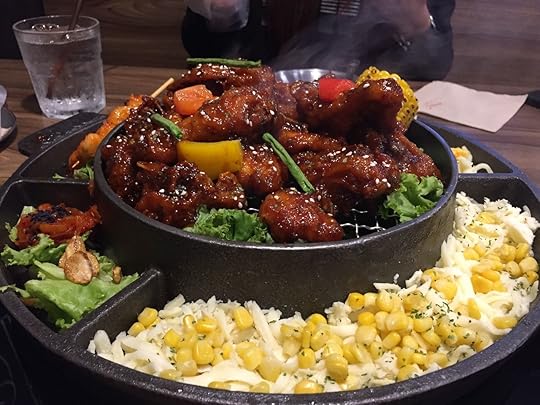
Photo: UWALAIPORN/Shutterstock
Chicken thighs: Chicken isn’t nearly as popular at Korean barbecue restaurants as beef or pork, and you’ll usually always find it marinated to combat its bland flavor. Chicken thighs marinated in a spicy garlic marinade is one of the most common cuts available.
Buldak: A spicy-sweet sauce is the signature ingredient of “fire chicken.” Bone-in chicken thighs marinated in this deep red dressing are charred on the grill. Though they can be eaten plain, a gooey layer of cheese is sometimes added to the top of the cooked chicken. 
More like thisFood + DrinkThe ultimate beginner’s guide to Korean barbecue
The post The complete guide to the most popular Korean barbecue meats appeared first on Matador Network.

What is wild rice?

Every year as the summer fades into fall, Minnesota embraces wild rice. People have harvested the grain from the region’s lakes for more than 2,000 years. Today, it’s a mainstay on dinner tables in the Upper Midwest and there are a number of companies that sell imitation “wild rice” across the country. But for the real stuff, you have to go north.
Wild rice has been the official state grain of Minnesota since 1977. The state once produced nearly all of the wild rice eaten in the world, and it’s still a major production region. It’s clear that wild rice is important in the region, whether you’re talking about its prominent place on the Midwest Thanksgiving table or its connection to the people who have embraced the grain for generations.
The majority of wild rice grows in central and north-central Minnesota. According to the state, it can be found in more than 1,200 lakes that span across 55 of Minnesota’s 87 counties. It takes a special set of conditions to grow — water levels between half a foot and 3 feet deep, for one, as well as three to four months of nearly freezing water for the seeds to germinate. It is, as the name implies, wild and not cultivated, but it’s not technically a rice. In the most basic sense, wild rice is a type of grass rather than a type of rice, and the rice-like seeds are one of two primary grains native to North America.
Wild rice plays an important role culturally as well. The grain was at the center of life for the Anishinaabe, a group of Indigenous peoples in the Great Lakes region linked by culture and the Anishinaabemowin language, that includes the Ojibwe, Potawatomi, and Odawa, among others. The Ojibwe call wild rice manoomin, which means good berry. In their origin story, the creator told the people to move west until they arrived “where food grows on the water.” That water referred to the lakes of what is now known as the Upper Midwest.
“Wild rice is part of our prophecy, our process of being human, our process of being Anishinaabe,” Andy Favorite, White Earth’s tribal historian, told Minnesota government researchers in 2008. “We are here because of wild rice. We are living a prophecy fulfilled.”
The Anishinaabe introduced wild rice to European fur traders early on in the colonial exploration of North America. They appreciated the highly nutritious grain, with the English calling it Indian rice and the French calling it folle avoine. It also went by a number of other names, like water oats and marsh oats.
Despite its local popularity, wild rice remained a regional and wild grain up until the 1950s, when James and Gerald Godward flooded paddies and cultivated the grasses for the ensuing ten years. By 1965, Uncle Ben’s (now Ben’s Original) had invested in the effort to domesticate wild rice and the company mixed wild rice with long-grain rice. This cultivated variant helped make the rice more affordable as well as more popular — the paddy-grown rice is typically what makes it into Thanksgiving recipes across the country. However, this cultivated variety lacks the connections to culture and the land that makes wild rice special. Ari Weinzweig classified the “imposter” cultivated wild rice in The Atlantic in 2010 as “industrial-agro-culinary silliness without the soul.”
The wild rice that has so long sustained people in the northern reaches of what is now the United States faces many threats. Dams and water channels detract from the plant’s natural habitat, while pollution spoils the water and soil. Climate change could make the wild rice untenable in its current state. Losing wild rice would have an impact on the cultures that have long relied on it, but also on the environment — nearly 20 species that the Minnesota Department of Natural Resources classifies as “species of greatest conservation need” depend on wild rice for shelter or food.
For now, wild rice is still more than just a mealtime staple. You can see the home of true wild rice first hand if you travel north during harvest season, which runs from August 15 to September 30. You need a license unless you’re a member of an Indigenous tribe (it costs $30 for a day license for non-residents, and $15 for Minnesotans), and you’ll also need to brush up on the many rules and regulations. Boats must be 18 feet long or shorter, and the push poles used to move the boats are required to have a forked end. Mechanical harvesting is all but banned.
To harvest, understand, and enjoy wild rice is to connect to the traditions and foodways of North America that existed long before it was known as America. 
More like thisFood + DrinkThe Midwest is the home of the casserole. These are the ones to try
The post Why you have to travel to Minnesota to find North America’s true wild rice appeared first on Matador Network.

Matador Network's Blog
- Matador Network's profile
- 6 followers



